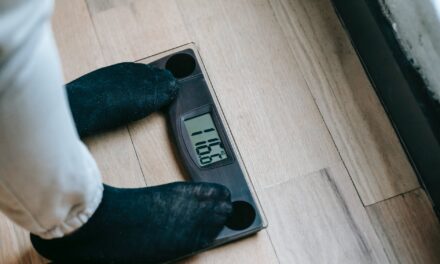I break lots of hearts on consultation calls.
People ask me if it’s possible to lose 30-40 pounds in a few months, and I’ll admit: it’s possible. But much of it will be water and muscle, resulting in a look you won’t like. Not to mention, you’ll likely gain everything back (and then some) faster than you lost it.
Then I suggest an alternative: a 2-5 pound per month pace—setting them up to lose 30-40 pounds in 6-12+ months. At this point, the aforementioned hearts shatter.
“But Sam… that sounds so slow.”
By whose standards? Mainstream media’s? Your own irrational ones? Your opinionated family member’s who’s on the same yo-yo cycle? Who decided sustainable was “slow”?
If you didn’t gain the weight you’re trying to lose overnight, why would it make sense to lose it overnight?

Self-imposed deadlines are a horrible idea
It doesn’t, and you know that—and your refusal to accept this is setting you up for failure. After all, 95% of dieting “issues” are rooted in impatience:
✕ Crash diets
✕ High frequency workout plans
✕ Quick drops in calories
✕ Scale stress
✕ Frequent discouragement
✕ Radical approaches
✕ Self-deprecation
Because we want results and we want them now! Believe me; I get it.
But this is where I challenge you:
Don’t you want lasting results? Aren’t you tired of constantly trying to lose weight?
Speaking of which: have you ever thought about the results you’re after? Do you really value arbitrary scale change over permanent change?
Do you really think rushing yet another transformation process is going to yield a different result?
Of course not.
So it’s time to set proper expectations, and as a byproduct, a healthy, sustainable plan—which starts with pursuing a non-aggressive calorie deficit: where you’re burning more calories than you’re consuming.
This how how all diets produce weight loss (no matter what they market).

Don’t worry: you don’t need to be a math expert
In most cases, a ~20% deficit is a good starting point for balancing progress and sustainability.
This means you multiply your maintenance calories (how many calories you need to maintain your bodyweight) by .8. Here’s what this looks like:
→ 2,400 calories for a 3,000 maintenance
→ 2,176 calories for a 2,720 maintenance
→ 1,952 calories for a 2,440 maintenance
→ 1,728 calories for a 2,160 maintenance
→ 1,504 calories for a 1,880 maintenance
→ 1,280 calories for a 1,600 maintenance
[HERE‘s a solid maintenance calculator (if you don’t know yours).]
Since a pound is ~3,500 calories, a 20% deficit typically produces a .64-1.2 pound loss (per week). But you won’t see a perfect downward trend on the scale (even if you’re “perfect”). The body isn’t a math equation and progress isn’t linear.
Here’s what your bodyweight averages might look like:
Week 1: 202.2
Week 2: 200.2 (-2)
Week 3: 200.4 (+.2)
Week 4: 200.0 (-.4)
Week 5: 199.2 (-.8)
Week 6: 198.5 (-.7)
Since this averages to .74 pounds per week, we’re in a good great spot. You’d lose 35-70+ pounds in 12-24 months, and likely never have to diet again, as you’ll have approached this in a way you can stick with (for once).
For the record: a 12-24 month journey to better health is NOT long. I’m not saying it’s easy… but it’s not long. It’s 0.025% of the average lifespan. That’s nothing if you’re remotely patient and operate with an ounce of perspective.
———
If you want “bonus points,” and really want to maximize your transformation, you won’t pursue weight loss. You’ll pursue fat loss, specifically—which requires getting enough protein while in a calorie deficit.
I outlined the top ways (and foods) in my NEW guide: the One-Stop Nutrition Guide. And I’m giving away free copies:

———
Now, we can’t forget about non-scale metrics.
We started with the scale because it’s a popular metric of progress and easy to track. Beyond this, we’re also looking at:
1) Progress photos
I recommend taking a front, side, and back shot every 2-4 weeks, and not getting your hopes up for highly visible change between (even if your nutrition is “perfect”). In most cases, you’ll see subtle differences in your midsection, and possibly your back.
Here's the best way to take them:
After 8-12 weeks, you might begin to see your arms and face "lean out." After 24+ weeks, you’ll see universal changes most programs promise in 4-6 weeks. If you’re consistent for 52+ weeks, you’re looking at “entirely new person” territory.
As always, there are exceptions to these benchmarks, but these are realistic expectations from a sustainable plan.
2) Measurements
I won’t even attempt to quantify what you “should” see when assessing measurements. This varies wildly, person to person, depending on measurement sites, genetics, nutritional consistency, and more. That said, here are the measurements sites I recommend:
Know that you typically won’t see more than a .2-2 inch difference in any measurement site during any given month.
3) Clothing sizes
Again, I won’t attempt to quantify what you “should” see when assessing clothing sizes. There are too many variables between clothing companies, fits, and more to reliably set expectations. But they’re still worth paying attention to.
———
To summarize:
You’re doing yourself a disservice if you’re prioritizing rapid weight loss—which includes water and muscle—over sustainable fat loss. You're better off setting a non-aggressive calorie deficit, and aiming to:
✔ Lose .5-1% of your bodyweight most weeks (without linear expectations)
✔ Looking for subtle changes in photos every 2-4 weeks
✔ Looking for .2-2 inch difference in measurements every month
✔ Paying attention to clothing sizes (over long periods of time)
Admittedly, it's challenging to be patient, and many people do best with a coach reeling them in—myself included. If you feel this may be the case for you, you can apply for a spot in the Hercules Performance Coaching Program below:
I'll take all the guesswork, analyzing, and stress out of your hands and make sure the results you get are lasting results.





